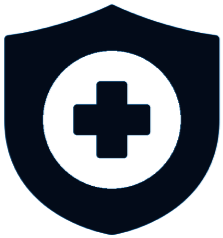Cost of Prescription Insurance: What To Expect
- Jose Ortez

- Feb 27
- 3 min read
Updated: Apr 3

Knowing how much prescription insurance costs is important for managing your healthcare budget. You should understand things like premiums, deductibles, copays, and out-of-pocket expenses. This knowledge will help you plan and avoid unexpected costs at the pharmacy. Let’s look at these costs and see how you can budget for your medications better.
Navigational Menu:
Understanding Prescription Insurance Costs
The cost of prescription insurance can change based on your plan, but learning the basics makes it easier to understand. Here are some important terms to know:
Premiums: This is the amount you pay each month to keep your insurance.
Deductibles: This is the amount you pay yourself before the insurance starts covering your medicines.
Copays & Coinsurance: This is the amount you pay for each prescription after you meet your deductible.
Knowing these factors helps you plan your budget for medicines and choose a prescription insurance plan that works for you.
How Does a Prescription Drug Deductible Work?
A deductible is the amount you pay yourself before your insurance starts to help. If you’re asking, “ how does a prescription drug deductible work? ”, here’s a simple explanation:
For example, if your deductible is $100, you need to pay that amount first. After you pay your deductible, your insurance will help cover the costs of your medications. Usually, you will only pay a small part of the cost afterwards. This small amount is called a copay.
Not all prescription insurance plans have deductibles. Some plans may not require a deductible for cheaper generic drugs. Make sure to check your specific plan to know what to expect for your medicine costs.
Do Prescriptions Count Towards Out-of-Pocket Maximum?
Your out-of-pocket maximum is the most you’ll pay in a year for covered health services, including prescriptions. Once you hit that number, your insurance covers 100% of the costs. So yes, depending on your plan, your prescription costs can contribute to reaching that max, which is a win for your wallet!
What is a Prescription Copay?
A prescription copay is a fixed amount you pay for a prescription after your deductible is met. For example, your insurance might have a $10 copay for generic drugs. That means you only pay $10, and your insurance covers the rest.
Planning Your Budget for Medications
With all these different costs, it can feel a little overwhelming to budget for your meds. Here's how you can get started and stay on top of your prescription expenses:
List Your Medications: Write down all the prescriptions you take regularly. This will give you a clear idea of what you need to budget for.
Know Your Costs: Find out the cost of each medication with and without insurance. Understanding your prescription cost without insurance can help you compare prices and see how much your plan actually saves you. Be sure to factor in the deductible, copay, and any costs if you haven't met your deductible.
Use a Calendar: Mark when you need to refill your prescriptions. This can help you plan your spending month-to-month and avoid last-minute expenses.
Explore Discounts: Some pharmacies offer discount programs that can save you money, especially if you're paying out of pocket or need a lower-cost alternative.
Review Your Insurance Plan: Check if your plan covers your medications and whether there are cheaper generic versions available to help you cut costs.
By understanding how prescription insurance works and planning ahead, you can manage your medication costs without too much stress. Remember, it's all about knowing what to expect and preparing for it. If you have any questions, don't hesitate to ask. We're here to help make this process as easy as possible for you!




Comments